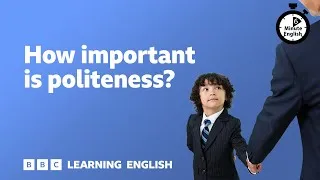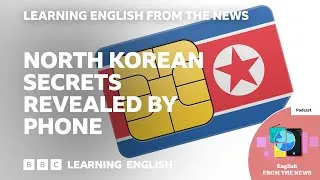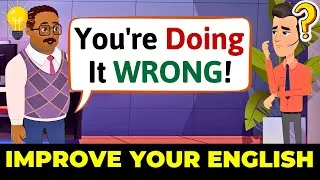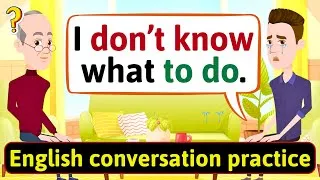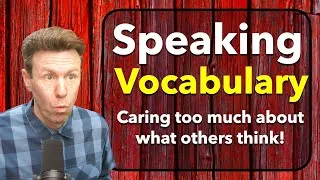아래 영문자막을 더블클릭하시면 영상이 재생됩니다. 번역된 자막은 기계 번역됩니다.
00:00
Hello.
0
0
740
안녕하세요.
00:01
My name is Emma, and today we are
going to talk about "ed" pronunciations.
1
1100
5560
저는 에마입니다. 오늘은
"ed" 발음에 대해 이야기해 보겠습니다.
00:07
So, "ed" is used in English
to show the past tense.
2
7380
6760
따라서 영어에서 "ed"는
과거형을 나타내는 데 사용됩니다.
00:14
We add it to a verb to
make it a past tense verb.
3
14640
4100
동사에 붙여
과거형 동사로 만듭니다.
00:19
So, for example, "Yesterday", so
this is the past, "I talked to my friend."
4
19360
8640
예를 들어, "어제"는
과거형이고, "나는 친구와 이야기했다."
00:28
"Talked" with "ed" is a verb, and it's been
put into the past tense; that's why there's
5
28000
6320
"Talked"에 "ed"를 붙이면 동사가 되고,
과거형으로 바뀌었습니다. 그래서
00:34
an "ed".
6
34320
1140
"ed"가 있는 거예요.
00:35
Now, what's the problem?
7
35460
2180
그럼, 문제는 무엇일까요?
00:38
Well, the problem is I
meet many people who are
8
38320
4044
문제는
00:42
learning English or who
have learned English.
9
42376
3884
영어를 배우고 있는 사람이나
영어를 배웠던 사람을 많이 만난다는 거예요.
00:46
Some people even have
been studying English
10
46680
3547
어떤 사람들은 수년간
영어를 공부했지만
00:50
for years, but they
often make mistakes with
11
50239
3641
00:53
the pronunciation of "ed".
12
53880
3140
"ed" 발음에서 실수를 하는 경우가 많습니다.
00:58
This is one of the most
common things I see.
13
58440
1640
이건 제가 가장
흔히 보는 것 중 하나예요.
01:01
So, for example, I'll
hear people say "talk-ed";
14
61000
5274
그래서, 예를 들어,
사람들이 "talk-ed"라고 말하는 것을 듣게 됩니다.
01:06
"Oh, yesterday I
talk-ed to my friend."
15
66286
4294
"아, 어제는
친구랑 통화했어요."
01:10
Now, if you listen to
how I say it, "Yesterday
16
70580
2625
이제 제가
"어제
01:13
I talked to my friend",
there's a difference
17
73217
2523
친구와 이야기했어요"라고 말하는 것을 들어보면
01:15
in the pronunciation.
18
75740
660
발음에 차이가 있습니다.
01:17
So, today I'm going to
teach you how to pronounce
19
77540
4108
그래서 오늘은 "ed"를
발음하는 방법을 알려드리고
01:21
"ed", and I'm also
going to teach you a very
20
81660
3700
,
01:25
special way to help
prevent these mistakes.
21
85360
4040
이러한 실수를 예방하는 아주 특별한 방법도 알려드리겠습니다.
01:29
I call it the blend method.
22
89480
2420
저는 이것을 블렌드 방법이라고 부릅니다.
01:32
I find this really helps students
learn how to pronounce "ed" correctly.
23
92700
4760
저는 이것이 학생들이
"ed"를 올바르게 발음하는 방법을 배우는 데 정말 도움이 된다고 생각합니다.
01:37
So, if you know that,
you know, there's different
24
97980
2513
그러니까, 만약 여러분이 "ed"를 발음하는 데는
여러 가지 방법이 있다는 걸 안다면
01:40
ways to pronounce
"ed", you've studied this
25
100505
2215
, 여러분은 이전에 이걸 공부했을 거고
01:42
before, there's something that
I can teach you still about "ed".
26
102720
4460
,
제가 "ed"에 대해서 여전히 가르쳐드릴 게 있어요.
01:47
And if this is new for
you, if you don't know
27
107180
2626
이게 여러분에게 처음 듣는 내용이고
01:49
about "ed" pronunciations,
I have a lot to
28
109818
2462
"ed" 발음에 대해 모른다면,
01:52
teach you today.
29
112280
720
오늘 제가 여러분께 가르쳐드릴 게 많습니다.
01:53
So, to get started, I
have this question.
30
113800
3680
그럼, 시작하기에 앞서
이 질문이 있습니다.
01:58
How many ways do we
pronounce "ed" in English?
31
118960
5140
영어에서 "ed"를 몇 가지 방법으로 발음합니까?
02:04
Okay, so there are three -
that's right, one, two, three.
32
124380
5660
좋아요, 그럼 세 개가 있네요.
맞아요, 하나, 둘, 셋.
02:10
Three ways to
pronounce "ed" in English.
33
130040
5120
영어로 "ed"를 발음하는 세 가지 방법
02:16
What are the three ways?
34
136360
880
세 가지 방법은 무엇인가?
02:17
We have - so, this
represents pronunciation.
35
137860
3340
우리는 - 이것이
발음을 나타냅니다.
02:22
This means "id", so
some past tense words,
36
142960
4053
이는 "id"를 의미하므로
02:27
like "wanted", "visited",
they have this "id"
37
147025
4355
"wanted", "visited"와 같은 일부 과거형 단어는
"id" 발음을 갖습니다
02:31
sound.
38
151440
500
.
02:32
"Some ed" just is a "t"
sound, so a "t" sound, "t".
39
152900
5480
"Some ed"는 그냥 "t"
발음입니다. 따라서 "t" 발음은 "t"입니다. 예를
02:38
So, for example, "watched",
and then we also have this "d".
40
158940
5560
들어 "watched"가 있고,
"d"도 있습니다.
02:45
Some "ed"s sound like a "d" sound,
so for example, "planned", "planned".
41
165140
7860
일부 "ed"는 "d" 발음처럼 들립니다.
예를 들어 "planned", "planned".
02:53
So, I'll go over each of these areas in a
moment, and we'll look at a lot of common
42
173680
6900
그럼, 저는 이 각 영역에 대해 잠시 살펴보고
,
03:00
examples for "id",
"t", and "d", but first I
43
180580
3892
"id",
"t", "d"에 대한 많은 일반적인 예를 살펴볼 것입니다. 하지만 먼저
03:04
want you to warm up
your ears and get ready
44
184484
3816
여러분
의 귀를 따뜻하게 하고 들을 준비를 시켜주시기를 바랍니다
03:08
to listen.
45
188300
580
.
03:09
I have here - one,
two, three, four, five, six
46
189520
3678
여기 하나, 둘,
셋, 넷, 다섯, 여섯,
03:13
- six verbs, they're
all in the past tense,
47
193210
3450
여섯 개의 동사가 있습니다.
모두 과거형이고,
03:17
they all end in "ed".
48
197040
1860
모두 "ed"로 끝납니다.
03:19
I will say the verb, and I want you
to choose, is it an "id", "t", or "d"?
49
199780
7580
동사를 말할 텐데,
"id", "t", "d" 중 어느 것인가요? 선택해 주세요.
03:27
How am I pronouncing the "ed"?
50
207360
2400
"ed"를 어떻게 발음하나요? "ed" 발음을
03:30
The first step to learning
"ed" pronunciations is
51
210660
2908
배우기 위한 첫 번째 단계는
03:33
to get used to listening
for "ed" pronunciations.
52
213580
2920
"ed" 발음을 듣는 데 익숙해지는 것입니다.
03:37
So, let's start with the first
one, "wanted", "wanted".
53
217140
5780
그럼, 첫
번째 것부터 시작해 보죠, "원함", "원함".
03:44
Which category is it?
54
224100
900
어떤 카테고리인가요?
03:45
It's this one, "wanted".
55
225300
2260
바로 이거예요, "수배".
03:50
Okay, what about the
next one, "talked", "talked".
56
230020
4480
좋아요.
다음은 어떨까요, "이야기했다", "이야기했다".
03:55
I "talked" to my sister.
57
235800
2200
나는 언니와 "대화"했다.
04:00
Is it "eh-eh" or "duh"?
58
240060
2860
"에-에"인가 "당연하지"인가?
04:02
It's the "t" sound, "talked",
and I'll explain why in a moment.
59
242920
6840
"t" 발음이고 "talked"인데, 그
이유는 곧 설명드리겠습니다.
04:13
"Called", "called".
60
253400
1080
"불렸다", "불렸다". 네
04:15
Okay, so this is a
little bit harder, I think,
61
255440
2319
, 이건
조금 더 어려울 것 같아요.
04:17
because you might
think it's this, you might
62
257771
2229
이게 뭐냐고 생각할 수도 있고,
04:20
think it's this.
63
260000
1300
이게 뭐냐고 생각할 수도 있거든요.
04:22
When I say "called",
it's actually the "d" sound.
64
262320
3400
"called"라고 말할 때,
실제로는 "d" 발음이에요.
04:28
So, and notice I'm not
saying "talked", "called",
65
268620
3465
그러니까, 제가
"talked", "called"라고 말하지 않는다는 점에 주의하세요. 영어를
04:32
that's what a lot of
people who are learning
66
272097
3123
배우는 많은 사람들이 그렇게
04:35
English say, but the correct
pronunciation is "talked", "called".
67
275220
5740
말하지만, 올바른
발음은 "talked", "called"입니다.
04:41
Okay, what about this
one, "watched", "watched".
68
281480
5140
좋아요, 이건 어때요
, "감시했어요", "감시했어요".
04:47
Okay, so this is actually
the "t" sound, "watched".
69
287320
5020
알겠습니다. 사실 이건
"t" 발음인 "watched"입니다.
04:53
Not "watched", "watched".
70
293340
2940
"감시했다"가 아니라 "감시했다".
04:56
Okay, "decided", "decided".
71
296280
4460
좋아, "결정했다", "결정했다".
05:01
This has the "id"
sound, "decided".
72
301940
4240
이것은 "id"
발음이고 "decided"입니다.
05:07
Let's look at the last one,
"opened", "opened", "opened".
73
307340
5980
마지막 것인
"열렸다", "열렸다", "열렸다"를 살펴보겠습니다.
05:14
Okay, I find that usually
the ones that have the
74
314100
3611
네, 저는 보통
05:17
"d" sound are sometimes
harder for listening,
75
317723
3397
"d" 발음이 나는 단어들은
듣기가 더 어렵다는 걸 알았는데,
05:21
but yes, this one
actually has the "d" sound.
76
321880
2800
네, 이 단어는
실제로 "d" 발음이 나네요.
05:25
So this might have been difficult
for you, and that's completely okay.
77
325240
3380
그러니 이게 여러분에게는 어려웠을 수도 있겠지만
, 그건 전혀 괜찮습니다. "ed"의
05:29
It takes time to learn to
listen for the pronunciations,
78
329020
3673
발음을 듣는 법을 배우는 데는 시간이 걸리고,
05:32
as well as to say the
pronunciations of "ed"
79
332705
2895
"ed"의 발음을
05:35
correctly.
80
335640
520
올바르게 말하는 법도 시간이 걸립니다.
05:36
Now, what we are going
to do is we are going
81
336920
3018
이제 우리가 할 일은 가장 쉬운
05:39
to first cover "id",
that's the easiest one,
82
339950
3030
"id"에 대해 먼저 알아보는 것입니다.
05:43
then we'll look at "t"
and "d" and we'll learn
83
343400
3451
그런 다음 "t"
와 "d"를 살펴보고 "
05:46
when do we pronounce
"ed" as an "id", a "t"
84
346863
3237
ed"를 언제 "id", "t"
05:50
or a "d".
85
350220
840
또는 "d"로 발음하는지 알아보겠습니다.
05:51
Okay, so I have here some common verbs that
have the "id" sound when we use "ed" with
86
351060
9020
좋아요, 여기
"ed"와 함께 사용하면 "id" 발음이 나는 일반적인 동사가 몇 가지 있습니다
06:00
them.
87
360080
260
06:00
So, I want to first say that "id" is like
its own syllable, so you'll see what I mean
88
360340
7360
.
그러니까, 먼저 "id"는
그 자체로 하나의 음절과 같다고 말하고 싶어요. 그러면 곧 제 말이 무슨 뜻인지 알게 될 거예요
06:07
in a moment.
89
367700
500
.
06:09
So we have the word "wanted".
90
369500
2720
그래서 "수배"라는 단어가 생긴 거죠.
06:13
You heard "id", this part
has two parts, "want",
91
373140
7657
"id"를 들어보셨죠. 이 부분은
두 부분으로 구성되어 있습니다. "원하다",
06:20
"id", okay, "needed",
"decided", "started",
92
380809
6871
"id", 좋아하다, "필요하다", "
결정하다", "시작하다", "초대하다", "
06:30
"invited", "weighted", "ended",
"painted", "hated", "protected".
93
390720
8620
가중치", "끝났다",
"칠하다", "싫어하다", "보호하다".
06:40
So this is probably the "ed"
you're used to pronouncing.
94
400600
4340
그러니 이건 아마 여러분이 발음하는 "ed"일 겁니다
.
06:45
This is usually the "ed" sound
people don't have much problems with.
95
405820
4760
이것은 일반적으로
사람들이 크게 문제 삼지 않는 "ed" 사운드입니다.
06:51
The problem is the "t" and
the "d", which we'll get to later.
96
411720
2620
문제는 "t"와
"d"인데, 이에 대해서는 나중에 살펴보겠습니다.
06:55
But, when do we
pronounce "ed" like this?
97
415340
2840
하지만, 언제
"ed"를 이렇게 발음할까요?
06:58
Well, it depends on the
sound before the "ed".
98
418600
4440
음, 그건
"ed" 앞의 소리에 따라 달라요. "ed" 앞에
07:03
If we have a "t" sound or a "d" sound
before the "ed", we pronounce it like "id".
99
423780
8480
"t" 발음이나 "d" 발음이 있으면
"id"처럼 발음합니다.
07:12
So, for example, here we have a "t", "d",
"d", "t", "t", "t", "d", "t", "t", "t".
100
432260
9860
예를 들어, 여기에는 "t", "d",
"d", "t", "t", "t", "d", "t", "t", "t"가 있습니다.
07:22
So, if you have a
verb ending with a "t"
101
442860
3593
따라서
"t"
07:26
sound or a "d" sound,
pronounce it like "id".
102
446465
4055
발음이나 "d" 발음으로 끝나는 동사가 있으면
"id"처럼 발음하세요.
07:30
Now let's get to "t" and "d"
and my blending technique.
103
450520
6300
이제 "t"와 "d"
그리고 저의 블렌딩 기술에 대해 알아보겠습니다.
07:37
Okay, so the next pronunciation for "ed" we
will talk about is the "t" pronunciation.
104
457420
7340
좋아요, 그럼 "ed"의 다음 발음에
대해 이야기해 볼까요? "t" 발음이에요.
07:45
So "ed" can be pronounced
like a "t" or a "t" sound.
105
465960
3960
따라서 "ed"는
"t"처럼 발음될 수도 있고, "t" 소리처럼 발음될 수도 있습니다.
07:50
So, I'll explain when this
happens in a moment,
106
470980
2990
그럼, 이런 일이 언제 일어나는지 잠시 후에 설명하겠지만
07:53
but first, let's look
at some of the most
107
473982
2618
, 먼저
07:56
common verbs that you
would use the "t" sound
108
476600
4279
"t" 발음을 사용하는 가장 일반적인 동사 중 일부를 살펴보겠습니다.
08:00
for, and then I'll teach
you my technique
109
480891
3909
그리고 나서
08:04
on how to pronounce
these properly.
110
484800
1620
이를 올바르게 발음하는 방법에 대한 기술을 알려드리겠습니다.
08:06
So, we have "helped",
"liked", "watched",
111
486420
7663
그래서 우리는 "도움",
"좋아요", "시청",
08:14
"talked", "kissed",
"hoped", "missed", "danced".
112
494095
8985
"대화", "키스",
"희망", "놓침", "춤"을 췄습니다.
08:24
So notice I did not say "helped", "liked",
"watched", "talked", "kissed"; no, I just
113
504100
6980
그러니 제가 "도움을 주었다", "좋아했다",
"봤다", "대화했다", "키스했다"고 말하지 않은 것을 주의하세요. 아니요, 그냥
08:31
made that strong "t" sound.
114
511080
2320
강하게 't' 발음했을 뿐이에요.
08:35
So, if you're having trouble
with this pronunciation,
115
515540
2556
따라서 발음에 어려움을 겪는다면
,
08:38
what you can do is
you can take your finger,
116
518108
2132
손가락을 가져다 대고 연습하고
08:41
you write down the word you want
to practice, so for example, "help".
117
521360
4020
싶은 단어를 적으세요.
예를 들어, "help"처럼요.
08:46
So if I wanted to practice "helped", what I
would do is I would write down "help" and
118
526080
5200
그래서 제가 "helped"를 연습하고 싶다면,
"help"를 쓰고
08:51
I would write down the "t".
119
531280
1820
"t"를 쓰면 됩니다.
08:53
And then with my finger, I would start to
slowly say both, "help", "t", "help", "t",
120
533100
9960
그리고 손가락으로
천천히 "도와줘", "t", "도와줘", "t"를 말하기 시작할 거예요.
09:03
so I want you to do that when
I point, "help", "t", "help", "t".
121
543820
8120
제가 "도와줘", "t", "도와줘", "t"를 가리키면 여러분도 그렇게 해주세요.
09:12
So we have the two
sounds, "help" and "t",
122
552580
2661
그래서 우리는
"help"와 "t"라는 두 가지 소리를 가지고 있습니다.
09:15
now what we want to
do is bring them together.
123
555253
2927
이제 우리가
하려는 것은 이 두 소리를 하나로 합치는 것입니다.
09:18
So what you can do
to practice, of course
124
558740
2207
그럼 여러분이 연습할 수 있는 것은
, 물론
09:20
you're not going to
do this in conversation,
125
560959
2381
대화에서 이걸 할 수는 없겠지만, 미리 단어 연습을 하는
09:23
but this is a good way
to practice these words
126
563760
3410
좋은 방법은,
09:27
beforehand, is you
take your finger and you
127
567182
3198
손가락을 움직여서
09:30
just move it while
you pronounce it.
128
570380
3040
발음하는 것입니다.
09:34
So watch this, "help",
"t", "help", "t", "help",
129
574140
6524
잘 보세요, "도와줘",
"t", "도와줘", "t", "도와줘",
09:40
"t", and then what I
can start doing is moving
130
580676
6264
"t", 그리고 제가
시작할 수 있는 건
09:46
my finger a little bit faster,
"helped", "helped", "helped", okay.
131
586940
8180
손가락을 조금 더 빨리 움직이는 거예요,
"도움이 됐어요", "도움이 됐어요", "도움이 됐어요", 알겠어요.
09:55
So I want you to try
this because I think it
132
595560
2236
그래서
09:57
really can help you with
your "ed" pronunciation
133
597808
2452
10:01
when "ed" sounds like "t".
134
601060
1620
"ed"가 "t"처럼 들릴 때 "ed" 발음에 정말 도움이 될 것 같아서 이걸 시도해 보고 싶어요.
10:03
Let's try another one.
135
603200
1260
다른 것을 시도해 봅시다.
10:04
We have here a very
common verb, "like", so
136
604920
4090
여기에는 매우
일반적인 동사인 "like"가 있습니다.
10:09
when "like" has an
"ed" on it, we can do the
137
609022
4198
"like"에
"ed"가 붙으면 똑같은 일을 할 수 있습니다
10:13
same thing.
138
613220
460
10:13
So on a piece of
paper I would write "like"
139
613680
2452
.
그러니까 종이에
"like"를
10:16
and I would write a "t",
and then what I would
140
616144
2636
쓰고 "t"를 쓸 거예요.
그런 다음 두 발음을
10:18
do is first pronounce
both, so "like", "t",
141
618780
5588
먼저 발음하죠.
"like", "t", "like", "t", "
10:24
"like", "t", "like", "t",
and now once I have
142
624380
5860
like", "t".
이제
10:30
those two sounds down, I'm going
to move my finger to pronounce it.
143
630900
3700
두 발음을 다 익혔으면
손가락을 움직여 발음할 거예요.
10:34
So I'll go "like",
"t", "like", "t", "like",
144
634600
6230
그러니까 "좋아요",
"ㅋ", "좋아요", "ㅋ", "좋아요",
10:40
"t", and then I'm going
to start moving my
145
640842
5958
"ㅋ" 이렇게 하고 나서
10:46
finger a bit faster, "like", "t",
"like", "t", "liked", "liked", okay.
146
646800
8820
손가락을 조금 더 빨리 움직이기 시작할 거예요. "좋아요", "ㅋ",
"좋아요", "ㅋ", "좋아요", 알겠어요.
10:55
So I find that using
the finger can really
147
655720
3573
그래서 저는 손가락을 사용하면
10:59
help your brain learn
how to pronounce these
148
659305
3755
뇌가 이런 식으로 단어의 발음을 배우는 데 정말 도움이 된다는 걸 알았습니다
11:03
words like this.
149
663060
840
.
11:04
So let's try this one
more time, and you can
150
664900
2290
그럼, 한 번 더 시도해 볼까요.
11:07
do this with all these
words, but let's do
151
667202
2198
모든 단어로 할 수 있지만,
11:09
it with "watch".
152
669400
960
"watch"로 해 봅시다.
11:10
"Watch" is another common
word, another common
153
670360
3971
"Watch"도 흔한
단어이고,
11:14
verb that with "ed"
it has that "t" sound.
154
674343
3637
"ed"와 함께
"t"로 발음되는 흔한 동사입니다.
11:20
So I wrote "watch"
and I wrote the "t", so I
155
680200
5632
그래서 저는 "watch"를 썼고
"t"도 썼습니다. 그러면
11:25
can say "watch", "t",
"watch", "t", and now
156
685844
5516
"watch", "t",
"watch", "t"라고 말할 수 있을 겁니다. 이제
11:31
what I'm going to do is blend
them, I'm going to put them together.
157
691360
3080
제가 할 일은 이것들을 섞는 것입니다
. 이것들을 합치는 것입니다.
11:36
"Watch", "t", "watch", "t", okay, and then
I can start doing it faster once I get the
158
696500
7320
"보았다", "삑", "보았다", "삑", 알았어요, 그러다가
익숙해지면 더 빨리 할 수 있을 거예요
11:43
hang of it, "watched",
"watched", okay.
159
703820
4780
, "보았다",
"보았다", 알았어요.
11:49
So again using that finger cue can really
help you with the pronunciation of "ed".
160
709080
4100
다시 말해서, 손가락 신호를 사용하면
"ed"를 발음하는 데 큰 도움이 됩니다.
11:53
So when do we use the "t" sound?
161
713800
2500
그렇다면 't' 발음은 언제 사용할까요?
11:56
So we talked about "id" before.
162
716540
2020
그래서 우리는 이전에 "이드"에 대해서 이야기 했었죠.
11:58
When do we use the "t"
sound for "ed" pronunciations?
163
718560
4140
"ed" 발음을 위해 언제 "t" 발음을 사용합니까?
12:03
Well, let me tell you.
164
723260
1060
글쎄요, 말씀드릴게요.
12:04
Alright.
165
724460
500
괜찮은.
12:06
So, why do we pronounce
"ed" like a "t" sound?
166
726680
4860
그렇다면 왜
"ed"를 "t" 발음처럼 발음할까요?
12:11
When does this happen?
167
731860
1000
이런 일은 언제 일어나나요?
12:14
Well, it can get a little confusing because
I have to teach you about something called
168
734160
6300
음, 무성 자음이라는 것에 대해 가르쳐야 하기 때문에 조금 혼란스러울 수 있습니다
12:20
voiceless consonants.
169
740460
2320
.
12:23
So, when we have a verb and the last sound
before the "ed" is a voiceless consonant,
170
743780
9580
따라서 동사가 있고
"ed" 앞의 마지막 소리가 무성 자음일 때,
12:33
we pronounce "ed" like a "t".
171
753940
3140
우리는 "ed"를 "t"처럼 발음합니다.
12:37
So, before we get to voiceless
consonants, I'll give you some examples.
172
757940
4860
그럼, 무성 자음에 대해 알아보기 전에
몇 가지 예를 들어보겠습니다.
12:43
You can also think
about this with letters.
173
763000
1800
이것을 글자에 대해서도 생각해 볼 수 있습니다.
12:45
If "ed" comes after a "p" or like a "puh"
as in "help", then you would pronounce it
174
765800
10400
"ed"가 "p" 뒤에 오거나
"help"처럼 "puh"처럼 오면
12:56
like a "t".
175
776200
840
"t"처럼 발음합니다.
12:57
If it's a "k", so in this word you have a
"k" here, so "ed" is going to be pronounced
176
777500
6280
만약 "k"라면, 이 단어에서는
"k"가 있고, "ed"는
13:03
like a "t" sound.
177
783780
1740
"t" 발음처럼 발음됩니다.
13:06
If you have an "s",
so a verb that ends in
178
786100
3020
"s"가 있으면,
13:09
"s", "ed" is going to
sound like a "t" sound.
179
789132
3248
"s"로 끝나는 동사 "ed"는
"t" 발음처럼 들립니다.
13:12
If you have a verb that ends in a "ch"
sound, then "ed" is pronounced like a "t".
180
792380
8680
동사가 "ch" 발음으로 끝나면
, "ed"는 "t"처럼 발음됩니다.
13:21
And then if you have
a word that ends in like
181
801060
4178
그리고
13:25
a "f" sound, so I know
this is "gh", but it's
182
805250
4190
"f" 발음으로 끝나는 단어가 있다면,
이건 "gh"인 걸 알지만,
13:29
pronounced like an "f", "laugh", then
"ed" is going to be pronounced like a "t".
183
809440
6280
"f"처럼 발음되면, "laugh", "
ed"는 "t"처럼 발음될 겁니다.
13:35
And then finally, if you have some "th"
sounds at the end, like in "bathed", the...
184
815720
9100
그리고 마지막으로,
"bathed"처럼 끝에 "th" 발음이 있으면...
13:44
After the "th", "ed" is going
to be pronounced like a "t".
185
824820
4300
"th" 다음에 "ed"는
"t"처럼 발음됩니다.
13:49
So, you can remember
it based off of these
186
829120
2382
그래서, 여러분은 이 글자들을 기준으로 기억할 수 있고,
13:51
letters or, you know,
these letters represent
187
831514
2566
이 글자들은 소리를 나타냅니다
13:54
sounds, so if you
have a "p" sound, a "k"
188
834080
3862
. 예를 들어,
"p" 소리, "k" 소리
13:57
sound, a "s" sound, a
"ch" sound, a "f" sound,
189
837954
4346
, "s" 소리, "ch" 소리,
"f" 소리,
14:02
or a "th" sound, then you would
pronounce, like, "ed" like a "t".
190
842300
6500
또는 "th" 소리가 있다면,
"ed"를 "t"처럼 발음하면 됩니다.
14:08
You can also do
it a different way.
191
848800
2220
다른 방법으로 할 수도 있습니다.
14:12
You can learn what a
voiceless consonant is.
192
852540
3020
무성 자음이 무엇인지 배울 수 있습니다.
14:16
So, a consonant are these types of
letters or sounds, so they are not vowels.
193
856140
7960
그러니까 자음은 이런 종류의
글자나 소리이기 때문에 모음이 아닙니다.
14:24
They are not "a",
"e", "i", "o", or "u".
194
864360
3420
그들은 "a",
"e", "i", "o", "u"가 아닙니다.
14:27
A consonant are the other
types of sounds in English.
195
867780
3060
자음은
영어의 다른 유형의 소리입니다.
14:32
So, I've drawn this diagram.
196
872060
4620
그래서 저는 이 다이어그램을 그렸습니다.
14:37
I'm sorry I'm not a great artist,
but I think it's good enough.
197
877420
4140
제가 훌륭한 예술가는 아니어서 미안
하지만, 이 정도면 충분하다고 생각해요.
14:41
There might be some
anatomy that's incorrect,
198
881900
2649
해부학적으로 틀린 부분이 있을 수도 있지만, 무성 자음의 개념을 이해시켜드리고 싶기
14:44
but that's okay because
I want you to understand
199
884561
2839
때문에 괜찮습니다
14:47
this idea of
voiceless consonants.
200
887400
2700
.
14:51
So we have here our
vocal cords or our voice box.
201
891380
5260
여기에 우리의
성대 혹은 음성 상자가 있습니다. 영어
14:57
So, some sounds in
English, we use our voice box.
202
897600
4340
의 어떤 소리는
음성상자를 사용합니다.
15:03
It's right here, and for some sounds, even
if you touch your throat right now, you'll
203
903120
4540
바로 여기에 있습니다. 어떤 소리는,
지금 목을 만져도
15:07
feel some movement.
204
907660
840
약간의 움직임을 느낄 수 있을 거예요.
15:08
It's moving.
205
908960
740
움직이고 있어요. 심지어
15:10
You might even feel
a "zzz" like a buzz.
206
910060
3080
"zzz"라는 소리를 윙윙거리는 듯한 느낌을 받을 수도 있습니다.
15:14
So that happens when
the voice box is moving.
207
914840
1880
음성 상자가 움직일 때 그런 일이 일어납니다.
15:17
Sometimes the voice box or the vocal cords,
they do not move, and air just comes from
208
917860
7100
때로는 음성 상자나 성대가
움직이지 않고, 공기가
15:24
the lungs through here.
209
924960
2180
폐에서 여기로 들어오는 경우도 있습니다.
15:27
There's no movement, and it goes
through the mouth out as a sound.
210
927260
5720
움직임이 없고,
입에서 소리로 나옵니다.
15:35
When there's no movement here,
we call that a voiceless consonant.
211
935000
4900
여기서 움직임이 없을 때,
그것을 무성 자음이라고 부릅니다.
15:40
So, for example, if I say this, "p", "p",
and I feel my throat, "p", "p", there's no
212
940400
7780
그러니까, 예를 들어, 제가 "p", "p"라고 말하고,
목을 만지면 "p", "p",
15:48
movement here.
213
948180
700
여기에는 움직임이 없습니다.
15:49
All the sound is actually
coming through my
214
949480
2191
모든 소리는 실제로 입을
통해 나오기
15:51
mouth, so we call that
voiceless because we're
215
951683
2357
때문에 우리는
15:54
not using our voice box.
216
954040
2060
음성 상자를 사용하지 않기 때문에 무성이라고 부릅니다.
15:56
We're not vibrating
our vocal cords.
217
956460
2740
우리는 성대를 진동시키지 않습니다
.
15:59
What's happening
when I make a "p" or a "p"
218
959640
3078
제가 'p' 또는 'p' 소리를 낼 때 일어나는 일은
16:02
sound is the air is just
coming through, there's
219
962730
3450
공기가 그냥
통과하는 것이고,
16:06
no movement here, and it's
just coming through my mouth.
220
966180
2560
여기에는 움직임이 없고,
그저 입을 통해 나오는 것입니다.
16:09
It's the same with all of these.
221
969300
1500
이것들 모두는 똑같습니다.
16:10
We call these voiceless consonants because
they're the sounds in English where there's
222
970860
5860
이것을 무성 자음이라고 부르는 이유는
영어에서
16:16
no movement here.
223
976720
1020
움직임이 없는 소리가 이 소리이기 때문입니다.
16:18
So you can see with "k", like the
"k" sound, it's coming from the mouth.
224
978780
4980
"k"를 보면
"k" 발음과 마찬가지로 입에서 나오는 소리라는 것을 알 수 있습니다.
16:23
If I feel "k", "k", there's
no buzz, but feel it
225
983760
4308
제가 "k", "k"를 느낄 때는
윙윙거리는 소리가 나지 않지만,
16:28
when you say "g", "g",
you'll feel a difference.
226
988080
4320
"g", "g"를 말할 때 느끼면
차이를 느낄 수 있어요.
16:33
For "s", you shouldn't feel anything here
if you go "sss" because this isn't moving,
227
993760
7000
"s"의 경우,
"sss"라고 발음하면 아무것도 느낄 수 없습니다. 움직이는 것이 아니라
16:40
it's all coming through the mouth, but if
you said "zzz" like a "zed" sound, you do
228
1000840
5120
입을 통해 나오는 소리이기 때문입니다. 하지만
"zzz"를 "zed" 소리처럼 발음하면
16:45
feel movement.
229
1005960
660
움직임을 느낄 수 있습니다.
16:47
So that's what I mean
by voiceless consonants.
230
1007200
2640
그러니까 제가 말하는 무성
자음이란 이런 거예요.
16:50
So, for some people,
they like this description
231
1010380
4604
그래서 어떤 사람들은
이런 설명
16:54
or explanation, so
they will figure out if
232
1014996
4124
이나 해석을 좋아해서, 목을 만져보고 생각해 보면서
16:59
a word ends in a voiceless consonant by
feeling their throat and thinking about it.
233
1019120
4440
단어가 무성 자음으로 끝나는지 알아낼 것입니다
.
17:04
For other people,
they don't like this, they
234
1024040
2410
다른 사람들은
이걸 싫어하고
17:06
think it's confusing,
and so they just prefer
235
1026462
2478
헷갈린다고 생각해서
그냥 암기하는 걸 선호해서,
17:08
to memorize, and
they'll just say, okay, "p"
236
1028940
3598
"p" 발음, "k"
17:12
sounds, "k" sounds,
"s" sounds, "ch" sounds,
237
1032550
3610
발음, "s" 발음, "ch" 발음
,
17:16
"f" sounds, and "th" sounds,
okay, I'll just memorize that.
238
1036160
3700
"f" 발음, "th" 발음,
좋아, 그냥 암기할게요"라고 할 거예요.
17:20
You can do it either
way, whatever is easier
239
1040320
3798
어느
쪽이든
17:24
for you, but that's what
I mean by voiceless
240
1044130
3810
여러분에게 더 쉬운 쪽으로 하세요. 하지만
제가 말하는 무성음이란 이런 발음
17:29
when you see any verbs ending in
these sounds, you pronounce it like a "t".
241
1049280
6220
으로 끝나는 동사를 볼 때
"t"처럼 발음한다는 뜻입니다.
17:36
So we've covered
"id", we've covered "t",
242
1056560
2631
그럼 우리는
"id"를 다루었고, "t"도 다루었습니다.
17:39
now let's look at the
third way to pronounce
243
1059203
2837
이제 "ed"를
발음하는 세 번째 방법인
17:42
"ed", and that is the "d" sound.
244
1062040
4480
"d" 발음을 살펴보겠습니다.
17:47
So it's like a "d", "d".
245
1067400
2220
그러니까 "d", "d"와 같은 거죠.
17:51
So first let's look at
some common verbs that
246
1071120
3288
그럼 먼저
17:54
have that "d" sound,
and I want you to listen
247
1074420
3300
"d" 발음을 하는 일반적인 동사들을 살펴보겠습니다.
17:57
very carefully.
248
1077720
760
아주 주의 깊게 들어보세요.
17:58
So we have "loved",
"called", "cried", "lived",
249
1078480
9853
그래서 우리는 "사랑했다",
"부렀다", "울었다", "살았다",
18:08
"moved", "closed",
"opened", "smiled", "played".
250
1088345
10075
"감동했다", "닫았다",
"열었다", "미소지었다", "놀았다".
18:19
So notice I'm not saying "loved",
"called", "I cried", "I lived", no, no, no.
251
1099160
7900
그러니 제가 "사랑했다",
"부르다", "울었다", "살았다"고 말하지 않는다는 것을 주의하세요.
18:27
What we're doing is we're just saying
the verb and then pronouncing a "d" sound.
252
1107060
6780
우리가 하는 것은
동사를 말한 다음 "d" 소리를 발음하는 것입니다.
18:35
So just like what we
did with the "t", we can
253
1115180
3168
그래서 우리가
"t"에서 했던 것과 마찬가지로, 우리는 손가락
18:38
do the same thing with
our finger to practice
254
1118360
3180
으로도 같은 것을 해서
18:41
this "d" sound.
255
1121540
1040
"d" 소리를 연습할 수 있습니다.
18:43
So I have here the
verb "love", like here,
256
1123420
3348
여기에
"사랑"이라는 동사가 있는데, 여기와 같습니다. 제대로
18:46
so if I want to pronounce
it properly, I can
257
1126780
3520
발음하고 싶다면
,
18:50
first start by writing
this on a piece of paper.
258
1130300
2720
먼저
종이에 이것을 적는 것으로 시작할 수 있습니다.
18:54
I write the word "love",
and then I write the "d".
259
1134380
4340
저는 "사랑"이라는 단어를 쓰고,
그 다음에 "d"를 씁니다.
18:58
And what I can do is
say them separately first,
260
1138720
6996
그리고 제가 할 수 있는 건
먼저 각각 따로 말하는 거예요.
19:05
so "loved", "loved",
"loved", and then what
261
1145728
6412
"사랑해요", "사랑해요",
"사랑해요", 그리고
19:12
I can do is use my
finger, combine them into
262
1152140
7453
손가락을 사용해서 이 단어
들을
19:19
one word, "loved",
"loved", "loved", and then
263
1159605
7635
하나의 단어로 합치는 거예요. "사랑해요", "
사랑해요", "사랑해요". 그리고 나서
19:27
I start trying to do it faster,
"loved", "loved", "I loved it".
264
1167240
6600
더 빨리 말하려고 노력해요.
"사랑해요", "사랑해요", "사랑해요".
19:34
Let's try another
example with this.
265
1174480
1740
이와 관련해 다른 예를 들어보겠습니다.
19:36
So now I'm going to
work on the word "call".
266
1176260
1760
그럼 이제
"부름"이라는 단어를 연습해 볼게요.
19:38
Actually, I shouldn't have
written this here, let me just...
267
1178020
3760
사실,
여기에 쓰면 안 됐는데, 그냥...
19:43
So we're doing this
one next, so I have "call"
268
1183000
4206
그럼
다음으로 이걸 하죠. "call"
19:47
and I have a "d", so
what I can do is first
269
1187218
3942
과 "d"가 있는데,
제가 할 수 있는 건 먼저
19:51
pronounce them
separately, "called", "called",
270
1191160
4895
둘을
따로 발음하는 거예요. "called", "called".
19:56
and now I'm going to
use my finger and blend
271
1196067
4693
그리고 지금은
손가락을 사용해서
20:00
them, "called", "called",
"called", and then
272
1200760
5748
둘을 섞어서 "called", "called",
"called". 그리고
20:06
when I'm ready, I can
start moving my finger
273
1206520
5760
준비가 되면
손가락을
20:12
faster and pronouncing
it all together, "called",
274
1212280
5258
더 빨리 움직여서
모두 합쳐서 발음할 수 있어요. "called",
20:17
"called", "called",
"I called my sister."
275
1217550
4410
"called", "called", "
I called my sister."
20:23
All right, so let's look at
another example of this.
276
1223080
2300
좋습니다. 그러면
다른 예를 살펴보겠습니다.
20:25
I have here "live", so
that's this one, and now
277
1225380
3645
여기에 "live"가 있고, 이게
그거고, 이제
20:29
I'm going to do the
same thing, I've written
278
1229037
3423
같은 걸 할게요.
20:32
"live" and I've written "d", and I'm going
to use my finger to help my pronunciation.
279
1232460
6380
"live"를 썼고 "d"도 썼어요.
손가락을 사용해서 발음을 돕겠습니다.
20:39
First I'll start separately,
"lived", "lived".
280
1239760
6180
먼저,
"살았다", "살았다"로 따로 시작하겠습니다.
20:46
Now I'm going to blend it with my finger,
"lived", "lived", and then I'm going to go
281
1246600
7380
이제 손가락으로
"살았습니다", "살았습니다"를 블렌딩하고, 그다음
20:53
faster, "lived", "lived", "I lived
in Toronto for many years."
282
1253980
8240
더 빨리 "살았습니다", "살았습니다", "저는
토론토에서 오랫동안 살았습니다"를 블렌딩하겠습니다.
21:03
So you might have to take
some time with blending,
283
1263040
2063
따라서
블렌딩하는 데 시간이 좀 걸릴 수도 있습니다.
21:05
I'm doing it quickly,
but it might take you
284
1265115
1785
저는 빠르게 설명해 드리겠습니다.
하지만
21:06
a little bit of time,
and that's fine.
285
1266900
1920
시간이 좀 걸릴 수도 있고,
그래도 괜찮습니다.
21:09
I recommend that you
try to use this strategy
286
1269540
2926
이 전략을
21:12
with the rest of the
words here and see if
287
1272478
2742
나머지 단어에도 적용해 보고
21:15
it helps your pronunciation.
288
1275220
1000
발음에 도움이 되는지 확인해 보세요.
21:17
Now, the next question is
when do we use the "d" for "ed"?
289
1277420
7500
다음 질문은
언제 "ed"의 "d"를 사용하느냐입니다.
21:25
So, this is when we
pronounce "ed" like a "d" sound.
290
1285740
6000
그러니까,
"ed"를 "d" 소리처럼 발음하는 거죠.
21:32
We do it when a verb
ends in a voiced consonant.
291
1292940
3660
동사가
유성 자음으로 끝날 때 그렇게 합니다.
21:37
So I already
explained voiceless.
292
1297900
1240
그래서 저는 이미
무성에 대해 설명했습니다.
21:39
Let's first think about some of the
letter sounds a verb might end in.
293
1299980
4580
먼저
동사가 끝날 수 있는 일부 글자 소리에 대해 생각해 봅시다.
21:45
So, here we have "l", so if you see a verb
ending in an "l" sound, like "call", "ed"
294
1305440
9240
예를 들어, 여기에는 "l"이 있습니다. 따라서
"call", "ed"와 같이 "l" 소리로 끝나는 동사를 보면
21:54
then becomes pronounced
like a "d", "called".
295
1314720
3720
"d", "called"처럼 발음됩니다. "clean"처럼
22:00
If there's an "n" sound,
like "clean", "clean"
296
1320000
3678
"n" 발음이 있는 경우
, "clean"은
22:03
ends in an "n" sound,
the "ed" is pronounced
297
1323690
3530
"n" 발음으로 끝나고,
"ed"는
22:07
like a "d".
298
1327220
1000
"d"처럼 발음됩니다.
22:09
If a verb ends in a
"b" or a "b" sound, like
299
1329740
3356
동사가
"b" 또는 "b" 발음으로 끝나면, 예를 들어
22:13
"rubbed", we would
pronounce it like a "d".
300
1333108
3292
"rubbed"처럼
"d"처럼 발음합니다.
22:17
Same with an "r", so "answer" ends in
an "r" sound, so we would say "answered".
301
1337500
6920
"r"도 마찬가지입니다. "answer"는
"r" 발음으로 끝나므로 "answered"라고 발음합니다.
22:25
"Love" ends in a "v"
sound, so here's the "v".
302
1345580
3140
"사랑"은 "v" 발음으로 끝나
므로 여기에 "v"가 있습니다.
22:28
So, if you see a "v"
and then "ed" after it,
303
1348720
3205
그러니까, "v"
뒤에 "ed"가 오면
22:31
you're going to pronounce
it like a "d", "loved".
304
1351937
3583
"d"처럼 발음하게 됩니다, "loved".
22:37
"M", verbs that end in "m", you're going to
add that "d" sound when you're pronouncing
305
1357080
6300
"M", "m"으로 끝나는 동사의 경우 "ed"를
발음할 때 "d" 발음을 추가합니다
22:43
"ed".
306
1363380
900
.
22:45
"G", so "hug" is an
example, "hugged".
307
1365160
4700
"G"이므로 "hug"는
예이며, "hugged"입니다.
22:50
"Zed", so this can be
confusing because sometimes
308
1370800
3801
"Zed"는
혼동스러울 수 있는데, 때로는
22:54
"s"s are actually
pronounced like "zed", so
309
1374613
3347
"s"가 실제로
"zed"처럼 발음되기 때문입니다.
22:57
for example, here we actually have a "zed",
"buzzed", so if you hear that "z" sound, we
310
1377960
7240
예를 들어, 여기서는 실제로 "zed",
"buzzed"가 있습니다. 따라서 "z" 발음을 들으면
23:05
would pronounce "ed"
like a "d" or like a "d".
311
1385200
3040
"ed"를
"d" 또는 "d"처럼 발음합니다.
23:09
For a "y", an "e", or
an "i" sound, you would
312
1389340
3295
"y", "e",
"i" 발음은
23:12
pronounce it like a "d",
so for example, "play"
313
1392647
3453
"d"처럼 발음합니다.
예를 들어, "play"는
23:16
ends in a "y", so
you'd say "played".
314
1396560
2720
"y"로 끝나므로
"played"라고 발음합니다.
23:19
And then finally, if
you see the "d", "g",
315
1399280
3455
그리고 마지막으로,
"d", "g",
23:22
"e" together, like it's
pronounced like "j",
316
1402747
3633
"e"가 함께 있는 것을 보면, 마치
"j",
23:27
"judge", then you
would say "judged".
317
1407740
3700
"judge"처럼 발음되는데, 이를
"judged"라고 말할 수 있습니다.
23:31
So, one way to do this is you can
remember the consonants or the letters.
318
1411440
6080
그러니까, 한 가지 방법은
자음이나 글자를 기억하는 것입니다.
23:38
Another way to do this
is to think about voicing.
319
1418860
3020
이를 위한 또 다른 방법은
발성에 대해 생각해 보는 것입니다.
23:43
So, here is my diagram again.
320
1423260
2340
그럼, 제 다이어그램은 다음과 같습니다.
23:46
Now we're going to talk
about voiced consonants.
321
1426980
3560
이제
유성 자음에 대해 이야기해 보겠습니다.
23:51
So, a voiced consonant
is a consonant, which
322
1431220
3271
따라서 유성 자음은
자음입니다. 즉,
23:54
means it's not a
vowel, it's not an "a", it's
323
1434503
3357
모음도 아니고, "a"도 아니고,
23:57
not an "e", it's not an "i",
it's not an "o", it's not a "u".
324
1437860
3440
"e"도 아니고, "i"도 아니고, "o"도
아니고, "u"도 아닙니다.
24:01
When we're talking
about voiced consonants,
325
1441300
3705
유성 자음에 대해 이야기할 때,
24:05
what we mean is that
your voice box actually
326
1445017
3803
우리가 의미하는 것은
음성 상자가 실제로
24:09
vibrates, so it moves when
you pronounce these sounds.
327
1449660
3460
진동하여
소리를 발음할 때 움직인다는 것입니다.
24:14
So what happens,
here's our diagram, the air
328
1454020
3580
그럼 무슨 일이 일어나는지,
여기 다이어그램이 있고, 공기가
24:17
goes up, but then
this is the voice box or
329
1457612
3428
올라가는데,
그러면 음성 상자 또는
24:21
the vocal cords, they
move, they vibrate.
330
1461040
3120
성대가
움직이고 진동합니다.
24:24
So then when the air hits them, it creates
this "z" sound, this buzzing sound, and you
331
1464960
6880
그러면 공기가 그 부분을 때리면
"z" 소리가 나고, 윙윙거리는 소리가 나며
24:31
can feel it in your
throat, and then the air
332
1471840
2577
목에서 그 소리를 느낄 수 있고,
공기가
24:34
comes out the mouth
and it's pronounced as
333
1474429
2471
입으로 나오면 유성음
으로 발음됩니다
24:36
a voiced sound.
334
1476900
720
.
24:38
So, for example, if we do "l", "call", if
you go "l", "l", you'll feel movement here.
335
1478060
7260
예를 들어, "l"을 하면 "call"이라고 하고,
"l", "l"이라고 하면 여기서 움직임을 느낄 수 있습니다.
24:45
If you do "n", "b",
"r", "b", "m", "g", "z",
336
1485320
8141
"n", "b",
"r", "b", "m", "g", "z"를 발음할 때,
24:53
and if you do, like,
"play", "a" sounds, or
337
1493473
7967
"연주", "a" 소리, 또는
25:01
"j", you'll feel the movement in here,
so that's why we call it a voiced sound.
338
1501440
4760
"j" 소리를 하면 이곳에서 움직임을 느낄 수 있으므로
이를 유성음이라고 합니다.
25:06
So "voiceless" is
there's no vibration here,
339
1506920
4535
"무성음"은
진동이 없다는 뜻이고,
25:11
"voiced" is there is
vibration in your throat.
340
1511467
4753
"유성음"은
목구멍에 진동이 있다는 뜻입니다.
25:18
But again, if this is
confusing, forget this
341
1518240
3751
하지만 이것이
혼란스럽다면, 이 그림은 잊고
25:22
picture, and you can
also just memorize the
342
1522003
3677
25:25
letters, or the final sounds,
which are "l", "n", "b",
343
1525680
5899
"l", "n", "b", "r", "v", "m", "g", "z", "y", "e", "i", 그리고 "d
25:31
"r", "v", "m", "g", "z", "y",
"e", "i", and "d", "g", "e".
344
1531591
6349
", "g", "e"라는 글자나 마지막 소리만 외워도 됩니다.
25:38
Okay?
345
1538560
540
좋아요?
25:39
So, we have covered a lot.
346
1539540
2040
이제 우리는 많은 것을 다루었습니다.
25:41
We've covered the three ways to
pronounce "ed", "id", "d", and "t".
347
1541960
7760
우리는
"ed", "id", "d", "t"를 발음하는 세 가지 방법을 다루었습니다.
25:49
So, most importantly, there's
three ways to pronounce "ed".
348
1549720
4640
그러니 가장 중요한 점은,
"ed"를 발음하는 방법이 세 가지라는 것입니다.
25:54
It depends on what
the final letter is before
349
1554360
4624
25:58
the "ed", how we
pronounce it, and we can
350
1558996
4224
"ed" 앞에 오는 마지막 글자가 무엇인지, 어떻게
발음하는지에 따라 달라지는데,
26:03
use the blending method to really help us
practice so we don't say, like, "loved", we
351
1563220
7220
블렌딩 방법을 사용하면
"loved"처럼 발음하지 않고
26:10
say "loved".
352
1570440
820
"loved"라고 발음하도록 연습하는 데 큰 도움이 됩니다.
26:11
We don't say "called",
we say "called".
353
1571760
2340
우리는 "부름받았다"고 말하지 않고,
"부름받았다"고 말합니다.
26:14
So, practice that
blending method with your
354
1574100
2449
그러니 손가락으로 그 블렌딩 방법을 연습해보세요
26:16
finger, and I think it
will really help your
355
1576561
2519
. 발음에
정말 도움이 될 거라고 생각해요
26:19
pronunciation.
356
1579080
660
.
26:21
So, thank you so much
for watching today.
357
1581300
2500
오늘 시청해 주셔서 정말 감사합니다. 여기서 배운 내용을 연습하려면
26:24
You can take my quiz at www.engvid.com
to practice what you learned here.
358
1584560
4740
www.engvid.com에서 퀴즈를 풀어보세요
.
26:29
There's a lot of
information in this video,
359
1589800
1963
이 영상에는 많은 정보가 담겨 있고
26:31
it's really good
information, but it's important
360
1591775
2205
정말 유용한
정보이지만,
26:33
that you practice
what you learned.
361
1593980
2340
배운 내용을 실천하는 것이 중요합니다.
26:37
You can also
subscribe to my channel.
362
1597440
1800
여러분도
제 채널을 구독하실 수 있습니다.
26:39
I have lots of videos on all sorts of
different topics, so come check them out.
363
1599460
5740
저는 다양한 주제에 대한 영상을 많이 가지고 있으니
, 와서 확인해 보세요.
26:45
And, again, thank you
so much for watching.
364
1605880
2380
그리고 다시 한번, 시청해 주셔서 감사합니다
.
26:48
Until next time, take care.
365
1608660
1620
다음 시간까지 잘 지내세요.
New videos
이 웹사이트 정보
이 사이트는 영어 학습에 유용한 YouTube 동영상을 소개합니다. 전 세계 최고의 선생님들이 가르치는 영어 수업을 보게 될 것입니다. 각 동영상 페이지에 표시되는 영어 자막을 더블 클릭하면 그곳에서 동영상이 재생됩니다. 비디오 재생에 맞춰 자막이 스크롤됩니다. 의견이나 요청이 있는 경우 이 문의 양식을 사용하여 문의하십시오.
